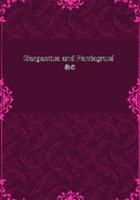
第12章
France, through a representative in a foreign land, however, comes into line again in the beginning of the eighteenth century, and in a really serious fashion, thanks to the very considerable learning of a French refugee, Jacob Le Duchat, who died in 1748. He had a most thorough knowledge of the French prose-writers of the sixteenth century, and he made them accessible by his editions of the Quinze Joies du Mariage, of Henri Estienne, of Agrippa d'Aubigne, of L'Etoile, and of the Satyre Menippee.
In 1711 he published an edition of Rabelais at Amsterdam, through Henry Bordesius, in five duodecimo volumes. The reprint in quarto which he issued in 1741, seven years before his death, is, with its engravings by Bernard Picot, a fine library edition. Le Duchat's is the first of the critical editions. It takes account of differences in the texts, and begins to point out the variations. His very numerous notes are remarkable, and are still worthy of most serious consideration. He was the first to offer useful elucidations, and these have been repeated after him, and with good reason will continue to be so. The Abbe de Massy's edition of 1752, also an Amsterdam production, has made use of Le Duchat's but does not take its place. Finally, at end of the century, Cazin printed Rabelais in his little volume, in 1782, and Bartiers issued two editions (of no importance) at Paris in 1782 and 1798. Fortunately the nineteenth century has occupied itself with the great 'Satyrique' in a more competent and useful fashion.
In 1820 L'Aulnaye published through Desoer his three little volumes, printed in exquisite style, and which have other merits besides. His volume of annotations, in which, that nothing might be lost of his own notes, he has included many things not directly relating to Rabelais, is full of observations and curious remarks which are very useful additions to Le Duchat. One fault to be found with him is his further complication of the spelling. This he did in accordance with a principle that the words should be referred to their real etymology. Learned though he was, Rabelais had little care to be so etymological, and it is not his theories but those of the modern scholar that have been ventilated.
Somewhat later, from 1823 to 1826, Esmangart and Johanneau issued a variorum edition in nine volumes, in which the text is often encumbered by notes which are really too numerous, and, above all, too long. The work was an enormous one, but the best part of it is Le Duchat's, and what is not his is too often absolutely hypothetical and beside the truth. Le Duchat had already given too much importance to the false historical explanation. Here it is constantly coming in, and it rests on no evidence.